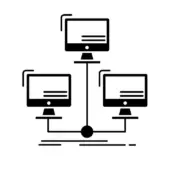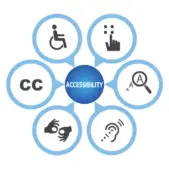Sitting at the crossroads of engineering, data science, and creative marketing is a growing trend that the start-up industry has termed “growth hacking.” The term arose out of the continuously evolving nature of digital channels. Growth hacking strategies describe the rhythms that encourage quick and scalable growth for start-up companies through these channels.
This article explores the intersection between growth hacking strategies and user experience (UX) design. We look at how growth hackers and UX designers can complement each other’s efforts to drive acquisition, activation, retention, revenue, and referrals.

Building Blocks of Growth Hacking Strategies
Growth hacking is a multidisciplinary approach combining marketing, engineering, design, and analytics. It employs unconventional methods and experimental solutions to address growth-related challenges.
Crucially, these solutions are data-driven. Growth hackers collect, test, and analyze relevant user data to better understand their target audience and the factors influencing their purchasing behavior. This data-centric approach allows growth hackers to develop and implement creative, evidence-based growth hacking strategies to acquire, engage, and retain customers effectively.
One of the significant facets of growth hacking is “virality control.” When something “goes viral,” it is usually an incident created by chance or circumstances outside of a marketer’s control. However, growth hackers aim to understand, control, and initiate this phenomenon at will.
By understanding the core motivations of consumers and what causes them to “want in” and “want more,” they can push past the outermost limits of contemporary marketing to achieve one objective, the ability to ensure the consistent success of any product they create. Growth hackers are “lean marketers” who support marketing decisions with data, not just theories. They:
- Check for opportunities
- Ideate
- Rank ideas
- Test ideas in controlled settings
- Analyze the findings before executing campaigns, and
- Continuously optimize
Their one objective is rapid growth.
Growth Hacking Meets User Experience Design
UX designers aim to create amazing products and seamless experiences that meet users’ needs and desires. However, their efforts are in vain if the target audience isn’t aware of the product or service. Merely making users aware of the product is not enough. To drive user engagement and referrals, the product must deliver a “wow effect” that captivates users and compels them to share it with their friends, family, and colleagues.
Successful UX design requires some adherence to “pirate metrics” principles. These cover the following areas:
- Acquisition
- Activation
- Retention
- Revenue
- Referrals
Although not the primary goal, UX design is concerned with leveraging consumer touch points to ensure rapid growth. Coincidentally, the same objective as growth hackers. Since growth hackers also need to create products that have a “wow effect”, they utilize pirate metrics when designing and implementing their marketing decisions.
Similarities Between UX Design and Growth Hacking Strategies
UX design and growth hacking share several fundamental similarities that enable them to complement each other’s efforts. Let’s explore some of the key areas where these disciplines intersect.
1. Data
Growth hacking and UX design both share a reliance on data. UX designers tend to use qualitative data to see how and why a product is used. Growth hackers prefer quantitative data to understand customer engagement and conversion channels.
2. Creativity and Innovation
The core skill sets for both disciplines are a knack for creativity and innovation. Growth hackers must think outside the box to develop innovative growth ideas as well as variations to conventional A/B testing. On the other hand, UX designers must be creative and innovative to create intuitive solutions to users’ problems.
3. A Thorough Understanding of the Target Audience
Growth hackers and UX designers must understand their target audience thoroughly to create products and experiences that captivate users. By deeply understanding user needs, motivations, and pain points, growth hackers and UX designers can develop solutions that truly resonate with the target demographic.
The Intersection of UX Design and Growth Hacking Strategies
Growth hackers and UX designers may have distinct goals, departments, and backgrounds, but their professional interests often intersect. Here are some scenarios where their collaboration can be mutually beneficial:
Growth Levers
Finding alternatives to conventional marketing techniques often requires growth hackers to transform the natural use of a product into growth levers. These growth levers come in various forms; they can be insights from usage data, incentives, backlinks, viral loops, or API integrations with other products.
Before using products as acquisition channels, they must be of a high standard, meaning they must have a phenomenal user experience. As such, growth hackers should work with UX designers to create product offerings that are irresistible to the intended audience.

Creating Virality
As explained above, virality control is a key growth hacking strategy. Growth hackers are tasked with creating a product with inherent virality or using unconventional marketing tactics to make products go viral. They love it when their products become viral because users begin to refer the products to their friends, who then refer them to their friends—naturally creating a snowball effect.
However, this only works if the product itself is extraordinary and has excellent UX features. A positive user experience (UX) can significantly impact a company’s Net Promoter Score (NPS). This, in turn, can help drive virality and acquire more customers through referrals. By creating a better user experience, companies can more easily achieve these results.
Optimizing UX for Growth
At the end of the day, poor UX equals zero growth. While the impact of UX design can be challenging to quantify, it significantly affects the success of growth hacking. Attracting many users is pointless if you cannot retain them. That’s where UX design plays a crucial role.
By understanding the key factors that drive user retention and leveraging shared principles of UX design and growth hacking strategies, you can create experiences that foster a strong, sustainable relationship between your brand and your customers.
At UpTop, our expert UX designers, strategists, and developers are passionate about creating exceptional digital products. From user research to UX strategy, design, and product development, we partner with you to optimize your digital products for user satisfaction and profitability. Ready to leverage UX for a competitive advantage? Let’s connect.


